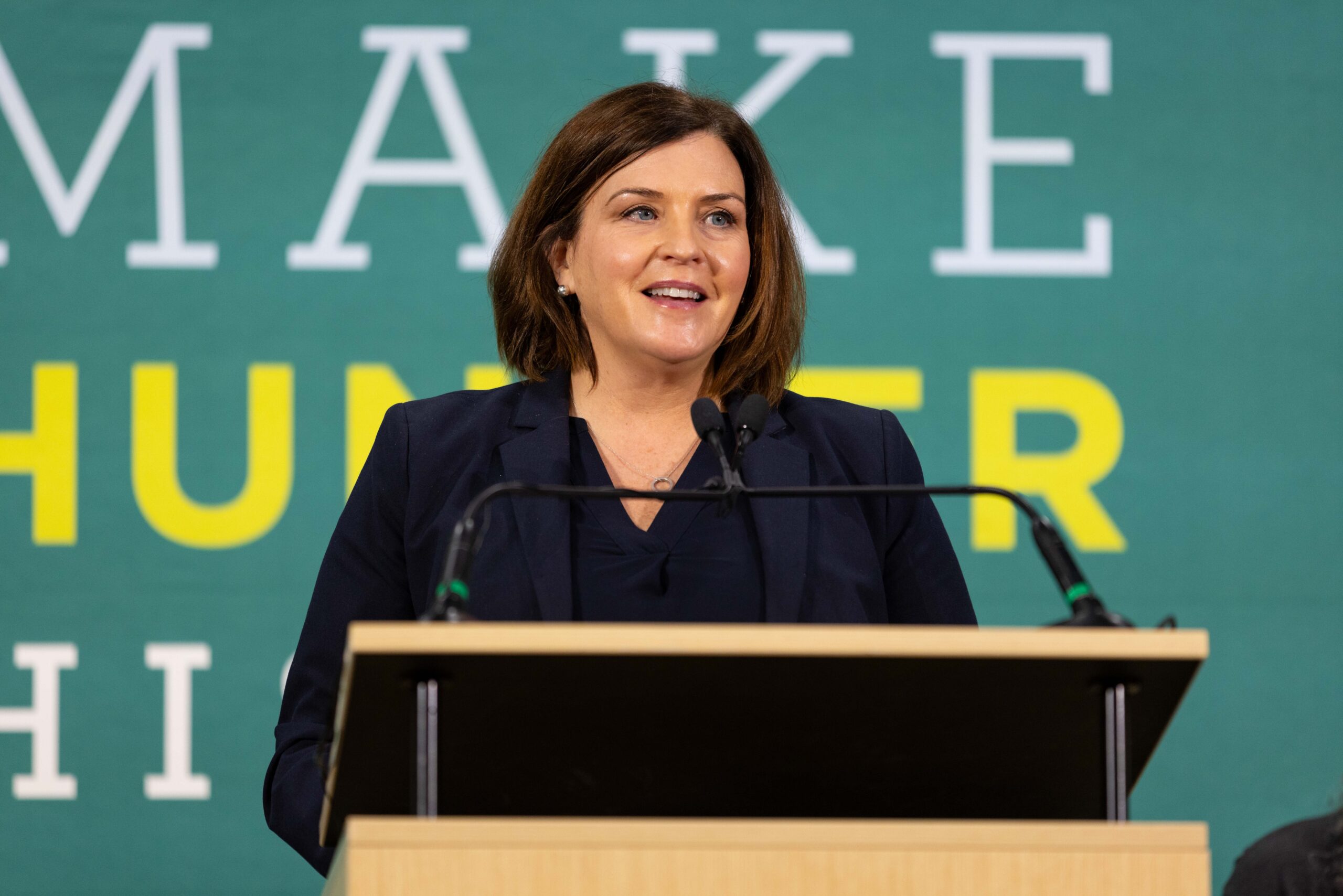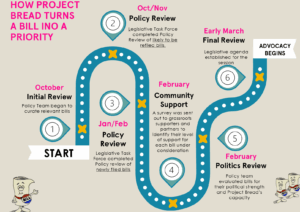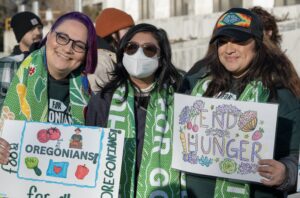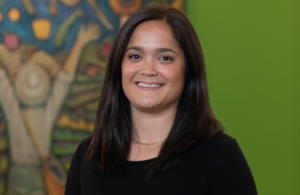Second Harvest Heartland of Minnesota has had enough. Last year, the nation’s seventh-largest food bank recorded 7.5 million visits to its food pantries, up from 5.5 million the year before, and double the number of 2021.
“It’s unsustainable,” said Allison O’Toole, the food bank’s CEO.
It’s why the food bank has taken on the very bold, very public goal of cutting hunger in half by 2030. It held a press conference to announce its Make Hunger History initiative, and is promising to release regular progress reports on its impact and results.
The food bank is confident it can deliver because of what it witnessed during the pandemic. Then, a multitude of community and business groups came together alongside state and federal government agencies to keep a potential tidal wave of hunger at bay. It was only when everyone went back to their pre-pandemic routines that pantry visits skyrocketed again.
“We need everyone back at the table,” O’Toole said. “When everyone’s at the table, figuring out solutions, that is the ideal situation.”
High on the food bank’s agenda is to prevent people from having to visit a food pantry in the first place. To that end, Second Harvest Heartland has ramped up its ability to help people apply for SNAP and other social services. Its new Care Center has a team of 27 staffers ready to help people navigate the state’s 10-page SNAP application, up from about five staffers previously. “We’ve invested millions in this work,” O’Toole said. She added, “I would love to spend even more time there [on SNAP] than distributing food out of our warehouse, but we’re not at that point.”
Last year, SNAP specialists at Second Harvest Heartland processed more than 15,700 new client referrals and assisted more than 8,750 households with SNAP applications and re-certifications, adding more than 9.4 million meals to families. According to the USDA, 460,600 Minnesotans participate in SNAP.
The food bank has also expanded its public affairs staff from one person to six, to help enact policy changes that would benefit low-income people. Among its goals are to make SNAP available to more college students, to increase the minimum senior SNAP benefit to $50 monthly from the current $23, and to request a Medicaid 1115 waiver so insurance funds could be used to support nutrition and housing programs. Noted O’Toole, “We have someone at the Capitol full time now.”
Harkening back to the days of Covid when everyone was working together, the food bank also announced its participation in a new cross-sector group called Nourish MN that encompasses nonprofits in housing, transportation and economic empowerment to advance anti-poverty advocacy. The group’s goals include affordable child care and housing, as well as better transportation. “It’s broader than we’ve ever thought,” O’Toole noted.
All of these federal assistance and advocacy activities fall under the category of prevention, which O’Toole considers fundamental to the food bank’s end game of halving hunger. “It is the key,” she said. “That is how we’re going to get to this goal.”
When it can’t prevent hunger in the first place, the food bank wants to reduce it. That means using data analytics to understand which communities are the most food insecure, and figuring out the best ways to fill those gaps. New partners, such as schools or libraries that are trusted, will likely be identified. But whatever the solutions, they will be community-driven, O’Toole said. “We’re a big player in this moonshot, but it is a community moonshot. It’s not just ours.”
As important as preventing and reducing hunger is tracking progress. Second Harvest Heartland plans to hold itself accountable to its goals in a very public way by releasing a scorecard one year from now, as well as progress updates every six months.
According to its website, the scorecard will measure food pantry visits and also reflect poverty and hunger rates, neighbors served, and government meals. While food pantry visits may go up in the short term, the food bank hopes to cut them in half by 2030. “We’re really putting a stake in the ground and holding ourselves publicly accountable, but it’s as a community,” O’Toole said. “It has to be a community effort, a movement to change this.”
While Second Harvest Heartland’s plan is big, it may not be big enough, according to Joel Berg, CEO of Hunger Free America. The food bank is on the right track in pushing SNAP, but that’s not a cure-all, he said, given that many people are ineligible for SNAP and many who use it still don’t always have enough money for food. “Certainly, 100% participation in SNAP should be a critical goal of every food bank, but that alone would only dent the problem, and not even come close to ending it,” Berg said.
Addressing hunger requires a more inclusive economy featuring living wage jobs and more affordable housing, healthcare and childcare, he said. By his calculations, published in a recent memo, increasing wages for the 50 million lowest-income workers by $2 an hour would be more effective by orders of magnitude over any improvements to SNAP or charitable food distribution. According to Berg’s math, increasing charitable food distribution by 20% would provide an extra $2 billion in food; increasing SNAP by 20% would provide an extra $33 billion in food, and increasing minimum wages by $2 an hour would provide an extra $208 billion for food. “It’s just incorrect to say we can end hunger without changing the economy,” Berg said.
Even so, Second Harvest Heartland has plenty of momentum on its side, with two Minnesota-based companies Cargill and Target, as well as an anonymous donor, pledging $10 million each in support of the multi-year plan. O’Toole estimates a need to raise $150 million to $250 million in a comprehensive campaign to further its moonshot goal.
O’Toole acknowledged that the food bank has promised to cut hunger in half, rather than end it entirely. “You’ve got to get halfway before you can get the whole way,” she said. “We’re going to get halfway and then we’re going to keep going.” – Chris Costanzo
PHOTO, TOP: Allison O’Toole announcing Second Harvest Heartland’s bid to cut hunger in half by 2030.
Like what you’re reading?
Support Food Bank News












